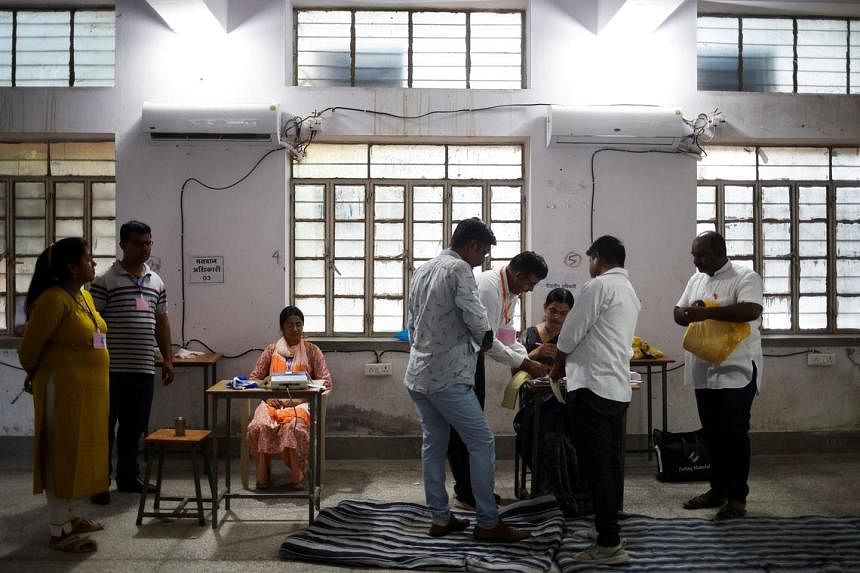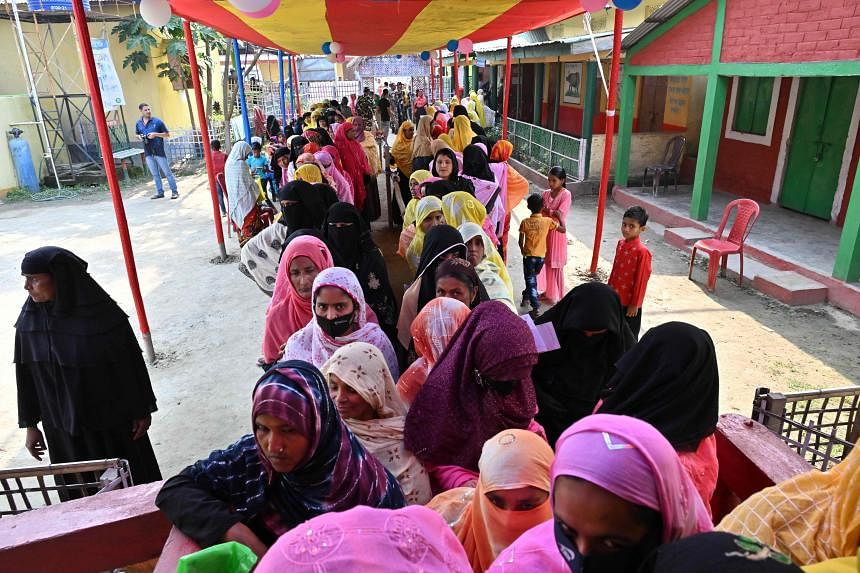BENGALURU/NOIDA – India voted on April 26 in the second phase of the world’s biggest election, as Prime Minister Narendra Modi and his rivals raise the pitch of the campaign by focusing on hot-button issues such as religious discrimination, affirmative action and taxes.
Almost one billion people are eligible to vote in the seven-phase election, which began on April 19 and concludes on June 1, with votes set to be counted on June 4.
Mr Modi is seeking a record-equalling third straight term on the back of his economic record, welfare measures, national pride, Hindu nationalism and personal popularity. Surveys suggest he will easily win a comfortable majority.
His challengers have formed an alliance of more than two dozen parties and are promising greater affirmative action, more handouts and an end to what they call Mr Modi’s autocratic rule.
A total of 88 seats out of the 543 seats in the Lower House of Parliament went to the polls on April 26, with 160 million people eligible to vote across 13 states and federal territories.
Voter turnout around the halfway mark was 39 per cent, an Election Commission (EC) spokesperson said.
The EC and political parties were concerned that unseasonably hot weather, and weddings in some parts of the country, would affect turnout.
More than half of the seats in the April 26 contests were in the southern states of Kerala and Karnataka and the north-western state of Rajasthan.
The campaign has become more heated since the first phase of voting on April 19 as Mr Modi and the main opposition Congress party have faced off on communal issues with Mr Modi accusing Congress of favouring minority Muslims, aiming to dilute affirmative action and planning to impose an inheritance tax.
Congress has denied the charges and said Mr Modi fears losing and was using divisive language to distract voters from real issues such as unemployment, the price rise and rural distress.
But some voters were responding to the Bharatiya Janata Party (BJP).
“I will vote for BJP. Muslims will get a lot of benefits if Congress comes to power and I don’t want taxpayers’ money to go for the benefit of any one community,” said Mr Shree Hari S.S., 23, who voted in the tech hub of Bengaluru.
Other voters were not happy with what they said was a sectarian shift in politics.
“The religious divide is very stark. As a member of the religious majority, I want to exercise my power to do something about it,” said Ms Vinesha T., 26, brand manager at a Bengaluru liquor company.
However, the BJP remained on a strong footing.
Ms Vibha Chugh, a resident of the Delhi suburb of Noida who runs a non-profit organisation that employs women, said she was confident Mr Modi would win again because “Modi is thinking of the big picture and that is good”.
Rahul Gandhi in the fray
Mr Rahul Gandhi, former Congress president and the face of the party, is among the 1,200 candidates in the fray on April 26.
“This election is not a regular election... because for the first time in the history of India, one party and one person is trying to finish the Constitution and democracy of India,” Mr Gandhi said at an election rally in a region of Karnataka which votes next week.
Mr Gandhi is seeking re-election from Wayanad in Kerala and faces Ms Annie Raja of the Communist Party of India (CPI) and BJP’s K. Surendran, among others, in the Left Front-ruled state.
In 2019, Mr Gandhi defeated the CPI candidate by more than 400,000 votes, the highest margin in Kerala, although he lost his second seat to BJP in the family bastion of Amethi in north India. India allows a candidate to contest more than one seat, but they can retain only one if they win more.
Congress slumped to a historic low when it was swept out of power by BJP in 2014 and won its second-lowest number of 52 seats in 2019, with Kerala contributing the highest of 15.

The party is also expected to do better in Karnataka, where it won just one of 28 seats in 2019 but gained strength and defeated BJP in state elections in 2023.
It is still seen to be struggling nationally, as bickering within the opposition alliance it leads and graft cases against some leaders have hobbled its challenge to Mr Modi.
On April 26, the Supreme Court declined to order any change to the vote-counting process, rejecting petitions seeking a return to the ballot system or to tally all slips generated as proof of voting via electronic machines. REUTERS

